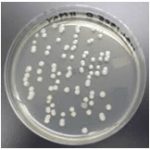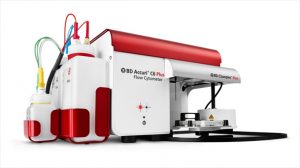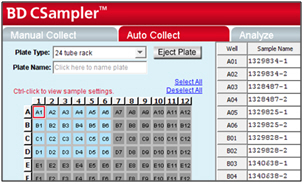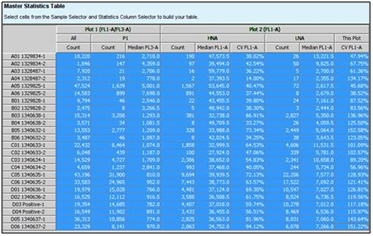Background
 For over 100 years, the conventional method used to assess the microbiological quality of drinking water has remained essentially unchanged: The heterotrophic plate count (HPC) is often used as a measure of general microbiological quality. However, despite its ubiquitous use, this method is non-specific and time consuming (>1 day).
For over 100 years, the conventional method used to assess the microbiological quality of drinking water has remained essentially unchanged: The heterotrophic plate count (HPC) is often used as a measure of general microbiological quality. However, despite its ubiquitous use, this method is non-specific and time consuming (>1 day).
Flow Cytometry
A much more rapid and complete method for the analysis of the microbiological quality of water resources and drinking water is provided by Flow Cytometry. As a diagnostic tool for enumeration and characterization of microorganisms it is rapidly gaining popularity and is increasingly applied in the water industry. With this technique, the determination of the total number of suspended bacteria can be completed in 15 minutes.
In Flow Cytometry, cells are stained with different fluorescent dyes, which bind to DNA. The cells are then passed through a glass capillary, where they are exposed to a beam of laser light. With the use of specific dyes or antibodies, living intact cells can be distinguished from dead cells.
In addition to the total cell number, the size of the cells can also be determined. With this information, a microbiological ‘fingerprint’ of each water sample can be generated, allowing rapid detection of changes or failures during drinking water treatment and distribution.
 In the UK, this technique is in its infancy for use assessing water quality but a number of companies are investigating its use including Northumbrian Water. The Becton Dickinson BD Accuri TM C6 is their instrument of choice. This system, when fitted with an auto-sampler can analyse about 12 samples/hour. Once any necessary calculations and interpretations have been carried out, a large number of results are generated. This is where the CSols Links for LIMS software can help.
In the UK, this technique is in its infancy for use assessing water quality but a number of companies are investigating its use including Northumbrian Water. The Becton Dickinson BD Accuri TM C6 is their instrument of choice. This system, when fitted with an auto-sampler can analyse about 12 samples/hour. Once any necessary calculations and interpretations have been carried out, a large number of results are generated. This is where the CSols Links for LIMS software can help.
Links for LIMS and Flow Cytometry
CSols have worked with Northumbrian Water Scientific Services to automate the data handling of Flow Cytometry data using its Links for LIMS software. Links for LIMS provides a powerful modular conduit between all types of instruments and LIMS systems.
The first process in running an instrument using Links for LIMS is for the user to query LIMS for samples to analyze. A worklist is generated and this contains, at a minimum, details of the samples and what components need be analyzed for each sample. The worklist is used to set up the instrument sequence.
Samples are run in duplicate to enable the total number of cells and the number of intact cells to be counted. The samples are tagged with ‘-1’ or ‘-2’, to signify which duplicate is which.
The instrument is then run, according to lab procedures captures all the raw results which are then processed by the instrument. There are a number of different reporting options available, an example screen is shown below.
Links for LIMS processes these results and calculates and displays the results required by the lab. All calculations are carried out, using the results from the required duplicate.
For a single run of 12 samples, over 100 results need to be sent to LIMS. This part of the process is very time consuming, and as some of the numbers are typically very large the chances of errors being made are very high. The results are sent to LIMS quickly, in seconds, and free of transcription errors.
Northumbrian Water are also working on an innovative way of taking the data from the analysis and calculating an overall ‘Water Quality Score’; which would make it quicker and easier to assess water quality across a range of samples. Using Links for LIMS, this calculation is automated and target values set with colour-coding to convey quality information quickly to the analyst.
Ian Barnabas, NWG Scientific Support Laboratory Manager said, “we have an ongoing partnership with CSols going back many years which has seen us working together to resolve technology issues across out labs. Once again, CSols have simplified our workflow for flow cytometry analysis which is a real time saving for the team and removes any issues with potential transcription or calculation errors.”
Summary
The Flow Cytometer, like many instruments with high sample throughput, is suitable for integrating with LIMS. For further information related to integrating your instrument with LIMS please contact us or alternatively visit our web site www.csols.com and complete the enquiry form.
CSols Ltd. The Heath, Runcorn, Cheshire, WA7 4QX, UK
Tel: +44 (0) 1928 513535
Fax: +44 (0) 7006 061106
email: links4lims@csols.com
Web: www.csols.com



